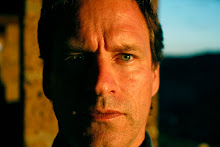On Friday a kid came by the house wanting to mow the lawn for $2. He's new to the business, still doesn't feel like an aggrieved genius, and was pleased when I upped the ante to $10 without encouragement. The mower started, I went back to puttering, and 15 minutes later it stopped. When it didn't start again, I went back outside to see what was happening. He was pacing around the front yard muttering.
"What's going on Troy?"
"This is bogus. Bogus! It's bogus. I killed an animal," he said. "It ran out over there in front of the mower before i could stop it."
I checked. Limp and sinking into the grass, there lay a baby rabbit, completely perfect except for the gash across its brow. I felt a pain in my chest; empathy's boa constrictor around my heart. It was squeezing for the rabbit and the boy.
"Look," I explained, "this is tough, it's tough, but it wasn't your fault. It's just a freak accident. This is the time of year when baby rabbits are born."
I got him mowing again. A half hour later, the mower stopped again. He was in the backyard, sitting at the patio table, his head resting in one hand. He sagged like an old man in the courtyard of a hospital.
"Troy, what happened?"
"I killed two more rabbits," he said. He pointed to the viburnums, but didn't lift his head. I found the rabbits, these looking just as lifeless but more torn up. I got out some newspaper again for a quick burial.
"They're good animals right?" he asked. "They don't hurt nobody." "Yeah, that's true," I said. I thought briefly about explaining to him that rabbits have a dark side, these ones might have been suicidal, etc., but decided to be sincere instead.
"Troy, it's OK to be sad, but you don't have to feel guilty. Rabbits sometimes flatten themselves in the grass when they're scared. You aren't a bad person because of this."
I could tell his heart was breaking though. What started out as a happy chance to get 10 bucks had turned into a painful emotional ordeal. He finished, I paid him and he left. A few hours later our neighbor Tom came over looking for the bodies of two rabbits his cat had killed the previous night. He meant to pick them up earlier in the day but got sidetracked.
I hope Troy comes back next week as promised, so I can relieve him of two-thirds of his guilt.
















